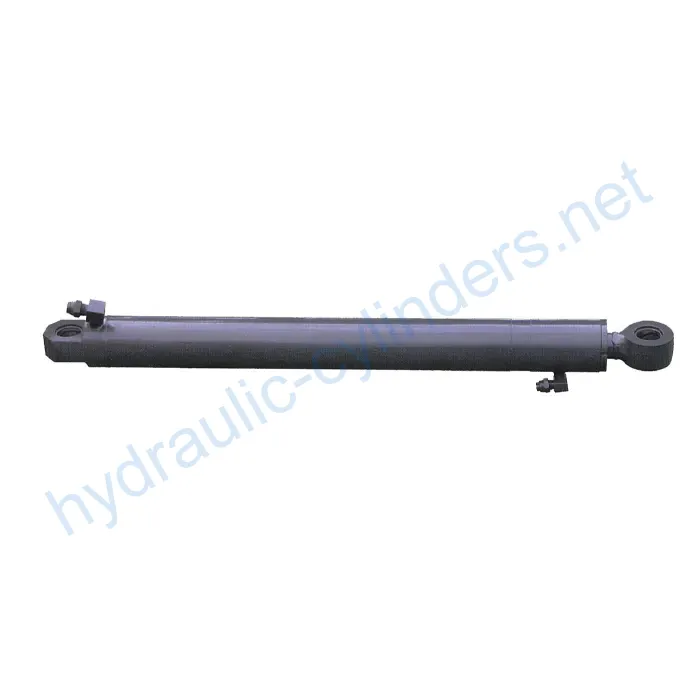Arm Cylinder For Volwa Small Excavator DLS880-9B
Arm Cylinder For Volwa Small Excavator DLS880-9B
Definition and Explanation
The arm cylinder is a specially designed hydraulic cylinder that provides linear movement and power to the arms of various types of machinery such as excavators, cranes, and mechanical arms. It plays a crucial role in hydraulic systems, allowing for the effective movement and control of attachments or accessories. These cylinders not only provide smooth movement but also withstand heavy loads, ensuring efficient operation and reliability of machinery under various working conditions.

Product Features
-
High-Efficiency Transmission
The arm cylinder can provide powerful linear movement and force, ensuring high efficiency performance of the mechanical arm in various operations.
-
Precise Control
Through the hydraulic system, the arm cylinder can achieve precise movement control, making the operation of attached tools more flexible and accurate.
-
Strong Durability
The arm cylinder is usually made of high-strength materials, which have good wear resistance and corrosion resistance, making them suitable for long-term use in harsh environments.
-
Multi-Functional Adaptability
These cylinders can be widely used in various mechanical equipment such as excavators, cranes, and mechanical arms, adapting to different work requirements.
-
Easy Maintenance
The design considers ease of maintenance and replacement, making regular inspection and maintenance more convenient, reducing equipment downtime.

Applications
The arm cylinder can be used in various industries and equipment:
-
Construction Engineering
In excavators and cranes, the arm cylinder is used to control the movement of the bucket or boom for earthmoving, material handling, and structural installation.
-
Manufacturing Industry
In automated production lines, the arm cylinder is used for the movement of mechanical arms for processes such as assembly, welding, and handling, improving production efficiency and accuracy.
-
Agricultural Machinery
In agricultural machinery such as harvesters and seeders, the arm cylinder controls the movement of the operating arm to perform tasks such as sowing, fertilizing, and harvesting.
-
Mining
In mining equipment, the arm cylinder is used to control the arm movement of mining equipment for mining and transportation of ores.
-
Logistics and Transportation
In forklifts and handling robots, the arm cylinder is used to control the lifting and movement of the fork, realizing the handling and stacking of materials.

Design Considerations and Selection Standards
-
Bearing Capacity
The arm cylinder must have sufficient bearing capacity to ensure the stability and safety of the equipment during operation.
-
Sealing Performance
The arm cylinder must have good sealing performance to prevent oil leakage and ensure the normal operation of the hydraulic system.
-
Durability
The arm cylinder must be made of high-strength materials with good wear resistance and corrosion resistance to ensure long-term use in harsh environments.
-
Safety
The arm cylinder must have safety features to prevent accidents during equipment operation.
-
Maintainability
The arm cylinder must be designed for ease of maintenance and replacement to reduce equipment downtime.

Sealing and Lubrication
The arm cylinder uses various sealing components, such as piston seals and rod seals, made of wear-resistant materials such as polyurethane and nitrile rubber. The cylinder body and threaded end surface undergo fine processing to improve wear resistance. It needs to be regularly filled with appropriate hydraulic oil for lubrication and cooling to ensure normal operation.
Regular Inspection and Preventative Maintenance
-
Regular Inspection
The arm cylinder needs to be inspected regularly to ensure its normal operation, including checking the sealing, lubrication, and wear of components.
-
Preventative Maintenance
It is necessary to perform preventative maintenance to reduce the possibility of equipment failure, such as timely replacement of worn seals and regular cleaning of the cylinder body.

Installation Guide
Before installation, clean the installation surface of the cylinder and the corresponding parts of the equipment. Follow the installation instructions to install the cylinder and connect the hydraulic hoses. The installation process should be careful to avoid damage to the cylinder body and components.
Safety Considerations and Environmental Factors
During operation, it is necessary to follow safety regulations to ensure the safety of personnel and equipment. Environmental factors should also be considered to reduce the impact of equipment operation on the environment.
Troubleshooting and Common Problems
Common problems include oil leakage, poor movement, and abnormal noise. These problems can be caused by various reasons such as component wear, improper installation, and insufficient lubrication. It is necessary to diagnose and solve problems in a timely manner to avoid equipment failure and ensure normal operation.
Conclusion
We are a professional manufacturer of replacement hydraulic cylinders, with a rich variety of products and have become one of the leading hydraulic cylinder manufacturers and wholesale distributors in the domestic and international markets. We always uphold the principle of excellent quality, rely on the industrialized production management strategy of the precision manufacturing workshop, continuously improve our technological level and production efficiency. Our goal is to meet the diverse needs of customers with principles of high efficiency, accuracy, and high quality.


Author: lyl.
参观我们的 VR 工厂
通过以下方式参观我们的 VR 工厂
液压缸应用:


